On the 24th of May in 1869, O.G. Howland set out with his brother Seneca on the Green River in Utah with eight other men, each a member of the historic Powell Geographic Expedition. Led by American naturalist John Wesley Powell, the expedition aimed to complete a cartographic and scientific exploration of the Green and Colorado Rivers, traveling into stretches of river and canyon that no white men—and in areas, even no Native Americans—had ever set eyes on. Some three months later, Howland, along with his brother and expedition member Bill Dunn, lay dead on a plateau overlooking Separation Canyon, shot full of holes by Shivwits Indians. Days earlier, after a mutiny that led Howland and his two companions to abandon the expedition, the men climbed 700 feet out of the granite-lined canyon, en route to a Mormon settlement they estimated to be at least 75 sun-bleached, barren, desert miles away.
It was Howland who oared the No Name, one of four wooden dories comprising the expedition, into the rapids at Disaster Falls—the first notable whitewater the group encountered after more than 60 relatively placid, playful river miles on the Green. The No Name, which led the expedition and was carrying the lion’s share of the group’s rations and scientific instruments, was sucked into Disaster’s currents. The river’s turbulent flows ripped Howland’s oars from his locks and slammed the boat into a rock, careening it downstream through the rapid and crashing the dory broadside into a boulder, splitting the hardy craft clean in two. Howland and two others were swept into the river, disappearing downstream beyond the view of their companions. Though all three survived, the accident claimed the No Name and one third of the expedition’s rations, with months of river still ahead.
After the incident, Howland wrote in his journal that “a calm, smooth stream is now a horror we all detest.” Many weeks later, after relentless downriver scouting, endless portages, dangerous and precarious sessions spent lining the dories through unrunnable sections of river, and ceaseless battering at the hands of the Green that left the men feeling like they had cheated death one too many times, they called it quits. The parting, according to Powell, was a solemn one, in which “each party thinks the other is taking the dangerous course.” Less than two days from when the rest of the group would safely reach the Mormon settlement near Grand Wash Cliffs, Howland and his cohorts scaled the walls out of Separation Canyon rather than risk another hundred yards on the river.
Over a century and a half later, this past August, I set out on the Green as part of a convoy of 13 would-be rowers split across five boats. Our group would retrace much of the expedition's steps, beginning in an upriver canyon Powell had affectionately named Flaming Gorge, traveling through the Gates of Lodore—where the river had long ago claimed the No Name—and taking out at Split Mountain.
As countless anglers and rafters and boaters did during the pandemic, I’d brought a raft in the door a few months prior. Yet, when the trip began, it’s fair to say I was little more than a greenhorn on the oars. I’d muddled my way through a handful of scattered hours in the rower’s seat in years past, and I’d spent the early summer months intently manning my craft whenever the opportunity arose. But this was freshman rowing—bathtub rivers like the Delaware and Connecticut, with a few riffles and small rapids under my belt on tame sections of waterways like the Lehigh, which are big enough to instill a sense of pride in new oarsmen, but present little in the way of hazards and true challenges.

Much like Powell’s group, as we moved downriver during the first few days of the trip, we enjoyed several days of placid river running, giddily shooting down small rapids and cruising our way through the flat waters of Browns Park until, on our third day, we met the torrent of Disaster Falls. After a careful downriver scout—where we revisited the calamity of the famed expedition and, under the tutelage of our guides, dissected the seemingly unsolvable deluge of churning froth—we climbed back aboard, with me at the helm of our craft, and descended into the canyon. Unlike Howland and his men, however, we emerged unscathed, with nary a bump along the way. Somehow, I managed to guide our 18-foot raft, which was loaded down with three passengers and hundreds of pounds of gear, safely through Disaster’s whitewater—which is now regarded as two distinct rapids, Upper and Lower Disaster Falls.
In 2020, with watercraft sales and recreational use of waterways skyrocketing as a result of the COVID-19 pandemic, boating accidents soared 26 percent compared to just the year prior. Sadly, the number of fatal incidents increased at a similar rate of 25 percent. In total, according to data compiled by the U.S. Coast Guard, 5,265 boating accidents occurred in 2020, resulting in 3,191 injuries and 767 deaths. While it’s important to note that those figures include both motorized and non-motorized watercraft, as well incidents occurring in both freshwater and saltwater, the trends seen in the report seem to be relatively consistent. An analysis of the data by the Water Sports Foundation (WSF) noted that the number of paddlesports accidents reached a record high of 331 in 2020, including 202 fatalities.
Another striking trend apparent in the Coast Guard data is the prevalence of a lack of instruction in recorded incidents. In over 77 percent of fatal accidents, watercraft were operated by individuals that had not received boat safety instruction. Expounding on the analysis by the WSF, Executive Director Jim Emmons noted that “in 2020, nearly three-quarters of people who died in paddling accidents had less than 100 hours experience in the activity, And over one-third had less than 10 hours experience.”


There was a time not long ago when I’d have waved away these kinds of statistics. As a rule of thumb, I consider myself more capable than the average individual, especially when it comes to activities that require a reasonable level of athleticism and coordination, not to mention a baseline of common sense. Plus, I’m an angler, who spends his time fishing and floating rivers that are relatively serene and benign when compared to even the low grade whitewater rivers of the world. But whether it’s because I’m getting older—I’m in my mid 40s now—making the active days I have left on the water increasingly precious, or because I’ve got two teenage daughters that I want to man the bow and stern, and eventually the oars, of my raft without putting them in harm’s way, I’ve been determined to learn to row properly. And not just the rowing itself, the whole lot—reading currents, rigging, boat and river safety, emergency response, and more.
It was that determination that led me to the Green this past August—for a whitewater rowing clinic. Operated by OARS out of Vernal, Utah (as well as out of a couple of other locations in the continental U.S.), the weeklong course is geared primarily for individuals—many of whom are 10-20 years my junior—who want to make a career of whitewater guiding, running passengers down famous rivers like the Green, the Colorado, the Rogue, the Salmon, and more. Certainly, I had and have no designs on becoming a whitewater guide. But the equation seemed like a simple one to me: if I could learn what it takes to row those rivers, I could damn sure row my rivers—and row them well.


We’d arrived at the foot of Flaming Gorge Dam, the malignant machinery of the dull concrete structure whirring in the distance, to greet our instructors at the put-in. Seeming to have been pulled straight from central casting, the co-ed fivesome offered such an eclectic mix of aged experience, youthful swagger, stolid discipline, hippie spirit, dirtbag charm, survivalist know-how, facial hair configurations, tattoos, piercings, and so on—a veritable Fortnite expansion pack of whitewater rafting guides—that it felt like there was an instructor, a teaching style, a catalog of learned experience tailor fit for every student and every challenge we’d encounter throughout the week.
Having eddied out just below Disaster Falls, looking back upriver at the remainder of our convoy to insure that the whole group made it through their descents safely, the exhilaration and bewilderment of having run the falls without incident mounted. At the very least, I’d expected a few mishaps—we’d go broadside in a bad current, get the boat pinned against a rock requiring a precarious rescue from the other rafts or, worst case scenario, we’d flip the boat and end up in the water. Each of those were reasonably possible, dangerous outcomes, and we were prepared for all of them—which is to say we discussed it.
It’s probably unfair to say that I had rowed the falls. Yes, those were my hands gripping the oars, my arms pushing and pulling them, and my ass planted firmly in the rower’s seat. But a reasonable case can be made that I was no more responsible for us navigating the upper and lower rapids without incident than say, the oars were, or the raft itself, both mere tools in the hands of the operator. In truth, the vast majority of the credit for our scot-free run goes to Kayla, the 25 year-old guide who descended the falls standing behind the rowers seat, one hand perched on my shoulder, her face mere inches from mine so that her voice could be projected directly into my ear to avoid her feedback being squelched by the roar of the falls. When fractions of seconds generously allowed it, Kayla calmly offered guidance and instruction, warding off my bad instincts or minor miscalculations. When those fractions evaporated and the situation demanded haste, she sternly barked commands and corrections. At several crucial points, she said nothing at all, which I’d later learn meant I’d done something right. And then, as quickly as it had begun, we were through. Big whoop, huh?

Similar scripts had played out in the other boats, all of which had been manned by students. Some ran Disaster just as cleanly, others with a bump, a scrape, or a spin or two. But all ran it without notable consequence. On only the third of our six days of trial-by-fire instruction, the education we’d already received—a comprehensive mix of “classroom” instruction around the campfire each night, on-the-water coaching as we oared our way through riffles and small rapids, and hours and hours of Miyagi-esque flat water rowing where our oar strokes were refined and optimized—had paid dividends.
Though OARS markets its Whitewater Rowing Clinics primarily to those interested in a career in whitewater guiding, it also takes care to note that the clinics are equally well suited to folks who, like me, simply want to become better, safer rowers. And, after all, it’s hard to pin down a single skill that a whitewater guide would develop that wouldn’t serve as an asset to make your average, recreational rower more skilled, more agile, and less likely to end up one of those aforementioned Coast Guard statistics.
The instruction offered is wonderfully comprehensive. Off-the-water necessities such as knots, boat rigging, camp skills, and more are all covered, as are river running essentials such as reading currents, river hydraulics, signals and communication, river etiquette, and rescue and crisis response. It’s a curriculum that is seamlessly woven into the tapestry of what is otherwise just a normal whitewater trip. But more importantly, it is one—I came to learn—that is taught by individuals that are fierce, passionate lovers of rivers.


Many anglers have a myopic arrogance that leads us to believe that we are the only true lovers of rivers and streams—especially wild rivers and streams. Others, even those that recreate on waters across the country, we imagine, view rivers as little more than playgrounds, unconcerned with minutiae like minimum stream flows, water temperatures, the health of fish and invertebrate populations, riparian zones, the impacts of dams, and so on.
If that ignorant notion hadn’t already been dispelled during the days prior, it was whisked away as I stood on a beach in Echo Park, after our convoy had crossed the border into Colorado, listening as Garth—one of our cacophony of whitewater guides and instructors—delivered a treatise both on the negative impacts dams have on wild rivers and on the history of the almost 70-year old battle to defeat a Bureau of Reclamation proposal to build a dam in Echo Park Canyon on the Green. It was a heartfelt dissertation that would likely put that of even the most ardent wild fish defender to shame, one which culminated in a reading from the late Mark Reisner’s incomparable book Cadillac Desert—an indispensable, gripping read on the history of water in the American West.
Some three days later—with the breathtaking granite cliffs of the Gates of Lodore, the deluges of Trinity Falls and Hell’s Half Mile, excursions on foot to view ancient petroglyphs, a little bit of time fly fishing the waters of the Green and Jones Hole Creek, far too much home-cooked comfort food, and countless hours spent conversing under a sky full of stars getting to know the other students who had ventured from all corners of the country and all walks of life to hone their skills on the oars—we beached the rafts at our takeout at Split Mountain and loaded into vans that would take us back to Vernal for an overnight before making our journeys home.


For seven straight days we had, mostly, just rowed. In the process, we had covered 90 miles of river coursing through some of the most awe-inspiring landscapes in the American West. We’d soaked up expert tutelage from our instructors whose wildly diverse river resumes and rowing styles offered up varied perspectives on style, technique, and approach. We’d learned how to better read the river and react to hydraulics and other hazards, when to push (mostly) and pull (hardly) the oars, how to leverage currents and eddies; we’d improved our oar strokes, ferry angles, knots and rigging methods, even learned how to run an efficient camp kitchen for 20. We were better, safer, more accomplished oarsmen and women.
Perhaps most importantly, we were—even the arrogant anglers among us—more in love with rivers, with wild water, than we were before.
IF YOU GO
Choosing an Outfitter
There are no shortage of guided whitewater trip operators in the U.S., but the vast majority of those are paddling — not rowing — trips. Schools, dedicated to instruction are even fewer and farther between. OARS' offerings are by far the most extensive, with two distinct instructional programs offered on rivers in Idaho, California, Oregon, Utah, and Colorado.
When to Go
OARS whitewater rowing clinics and guide schools are offered at various times throughout the summer, with classes beginning in some locations as early as July.




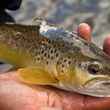
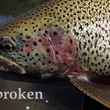





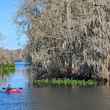
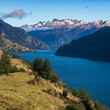



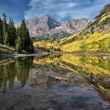
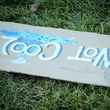



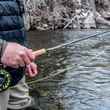
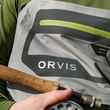



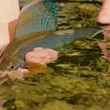
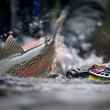

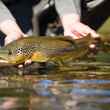
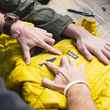
Comments
RogerB replied on Permalink
Thank you for your article stressing the importance of learning the proper rowing technique from a reliable source. Some years ago, well before the Pandemic, I was out fishing the Roaring Fork river aboard a friend’s raft. I felt guilty that I was fishing and he was doing all of the rowing. After I repeatedly offered to row and let him fish, he reluctantly gave in and I took the oars. I only occupied the middle seat for a short time before I was totally discombobulated. My friend returned to the work seat and I caught more fish. It was on that day that I took an oath to get the proper rowing education that would allow me to pitch in on the oars in the future. Our local fly shop offered a two part guide school each spring and I enrolled in the second part, Rowing. I am proud to say that after a week on our local rivers, the Colorado, the Eagle, and the Roaring Fork, I secured my Colorado Oar Certification. I now felt comfortable taking friends and family out on our rivers on my new river raft. I always errored on the side of safety and never incurred any major issues. We always returned to the take out points in tack. While the oarsman does not get to fish much, I always found a spot to beach and do a bit of wade fishing. I also found the rowing to be a great exercise and therapeutic in allowing more time to take in the beautiful environment that we enjoy. I too encourage all river rafters to get the much needed instructions before venturing out on your own.
Mike Lundrigan replied on Permalink
“anglers have a myopic arrogance” ….. you really wrote that?? Speak for yourself and don’t label others who you never ever met or know anything about … how arrogant of you to label an entire group of millions of “individuals” ….. totally uncalled for and shows me you are a real ass!!
C Wentz replied on Permalink
Reread the author's text again. He said "many" anglers have a myopic arrogance, not "all." Cut him a little slack, as you were in error. Good article.
Pages